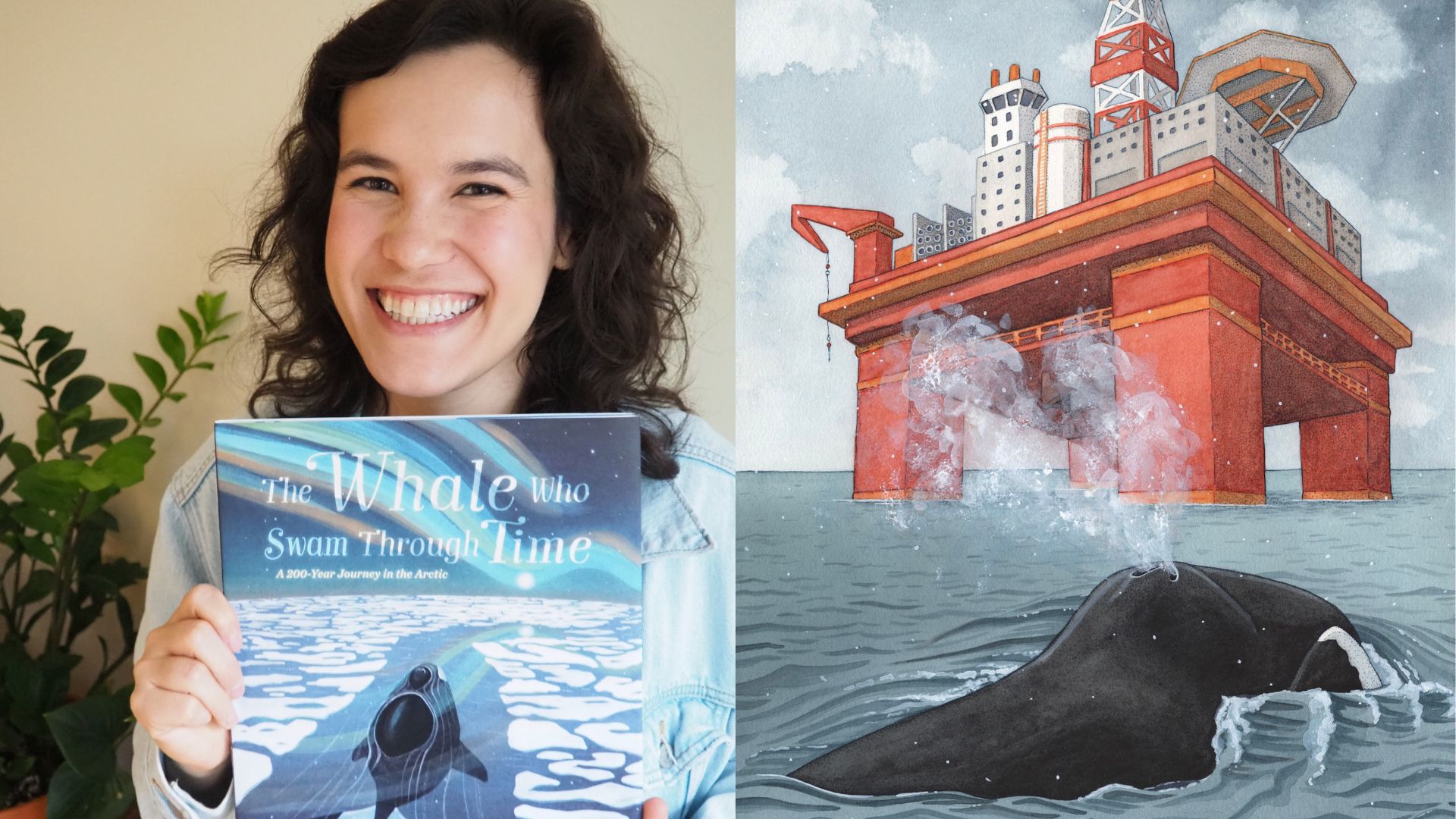An alumna shows (and tells) history through the eyes of a whale

Alex Boersma and her book "The Whale Who Swam Through Time"
October 3, 2023
By Marielle Argueza
A lot can happen in 200 years, and there are very few organisms, let alone mammals, that can live to see that length of time. There is an exception.
Alex Boersma, a 2017 graduate of CSU Monterey Bay’s Science Illustration Certification Program, knows this. She co-wrote and illustrated a book all about the life of a bowhead whale, the longest-lived mammal on Earth.
The children’s picture book ”The Whale Who Swam Through Time: A 200-Year Journey in the Arctic” is broken up into four major sections documenting the life of a single bowhead whale’s life in the Arctic. Each section is roughly 50 years apart and documents major historic events in the region, beginning with an encounter with explorers sailing through the Northwest Passage.
Then the story moves through the developments of whale hunting, the shipping industry, and sonar exploration. The final period is the whale encountering the slow but constant effect of climate change.
“The coolest thing about [bowhead whales] is that they live for 200 years,” Boersma said. “We can’t really know what that experience is like.”
Boersma grew up learning that science is a field of logic, objectivity, and strict methods of questioning; while art was a field of expression, subjectivity, and creativity.
“It just felt like you had to stick with one or the other,” she said. “They were treated like two different worlds.”
At Vassar College, she majored in geology and minored in studio art, eventually landing a job at the Smithsonian National Museum of Natural History researching extinct whale species.
But she also felt disconnected from her artistic abilities. So as one does, she went on Google.
Further exploration led her to apply to CSUMB’s Masters Certification in Science Illustration, the only degree of its kind in the U.S. Once in, Boersma was reintroduced to pen, ink and watercolor.
“It is a technical degree and I learned so much,” she said. “I think because I had kind of done art before, I didn’t really get a lot of technique instruction per se. It was really going back to basics, like rendering, and even that felt hugely satisfying.”
To keep the certification program fresh and relevant, it changes in tune with what’s happening in the job market – like digital rendering techniques.
Reid Ptalis, the Science Illustration program coordinator, believes that the work preparedness part of the program remains strong.
“The journeys our graduates embark on are quite variable,” said Ptalis. “There are so many different ways to communicate science visually and apply these skills professionally.”
After one intense academic year, Boersma graduated in 2017 and began work as a freelancer, illustrating for many magazines, exhibits and nonfiction books. Nick Pyenson, a colleague and mentor at the Smithsonian, reached out to Boersma to illustrate an adult non-fiction book that he wrote.
“During the pandemic, we collaborated on our second project together – “The Whale Who Swam Through Time” – which we co-wrote and I illustrated,” Boersma said. It was her first children's book, a new foray into writing, and she said it was difficult to make complex concepts understandable.
Science Illustration students have gone on to work with a wide range of scientific organizations, research institutions, publications, museums, aquariums, and botanical gardens, illustrating natural science topics and producing 2D and 3D science visualizations. They contribute to public art projects, interactive design and exhibits, documentary films, information and news graphics, science education, and more.
“I walked into the program questioning if this could be something that was feasible, and I left feeling that it actually was,” said Boersma.